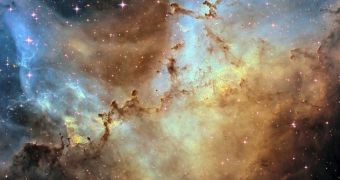A paper published in yesterday's issue of the journal Nature details how, while observing a massive stellar explosion known to the scientific community as a supernova, researchers managed to gain a better understanding of where the cosmic dust in our universe comes from.
In this paper, scientists with the Niels Bohr Institute at the University of Copenhagen and the Aarhus University in Denmark detail that the supernova this research project focused on is dubbed SN 2010jl.
The supernova was first documented in November, 2010, in the galaxy UGC 5189A, at a distance of about 160 million light-years from Earth. The explosion is believed to have occurred about a month before being spotted.
To spy on this massive stellar explosion, astronomers relied on a spectrograph on the Very Large Telescope on Cerro Paranal in Chile, which they used to collect information concerning the density and size of dust particles in the supernova's proximity.
This information was obtained by studying the amount of visible light absorbed by the dust particles, and also the infrared radiation emitted by the particles themselves, the scientists behind this research project write in the journal Nature.
It was thus discovered that cosmic dust formed in this supernova just weeks following the explosion, and continued to do so for nearly two and a half years in the aftermath of the initial boom. Interestingly enough, dust production was found to speed up as time went by.
What's more, of the dust grains that did form in this supernova, many were found to be more than capable to withstand the shocks birthed by the explosion. Astronomers say the dust grains likely proved this resilient due to their fairly impressive size.
Thus, they argue that, according to data at hand, the grains birthed by SN 2010jl were at least four times bigger than the ones commonly found hanging about star systems in our Milky Way. Hence, their ability to easily cope with shocks should not come as such a big surprise.
Information shared with the public says that, at first, the amount of cosmic dust coughed out by SN 2010jl was the equivalent of one-ten-thousandth of the mass of our Sun. By the 868th day following the explosion, cosmic dust formation had increased to 830 Earth masses.
In light of these findings, researchers argue that supernovae likely play a crucial role in shaping the universe as we know it. This is because cosmic dust such as the one produced by SN 2010jl is a chief ingredient in the formation of new stars and planets.

 14 DAY TRIAL //
14 DAY TRIAL //